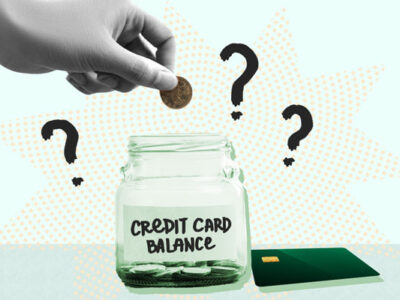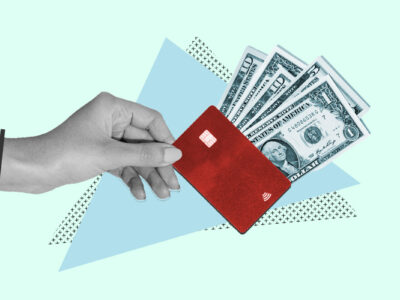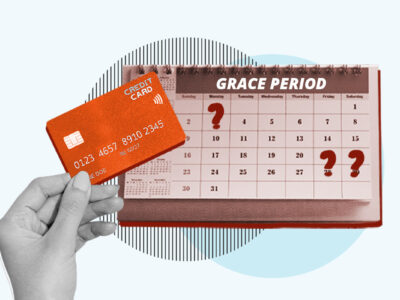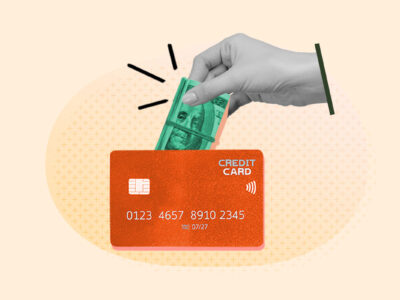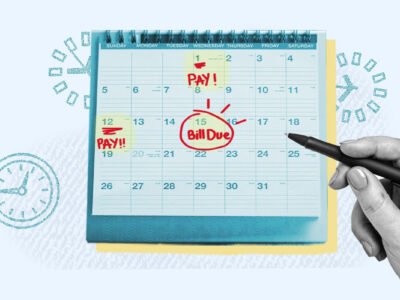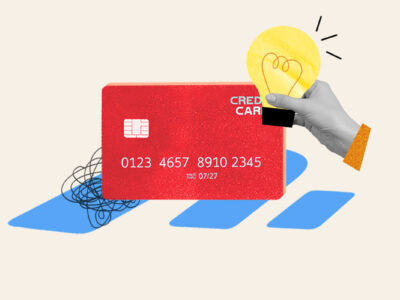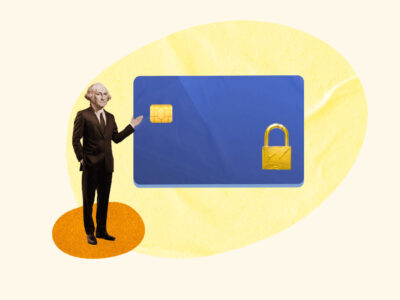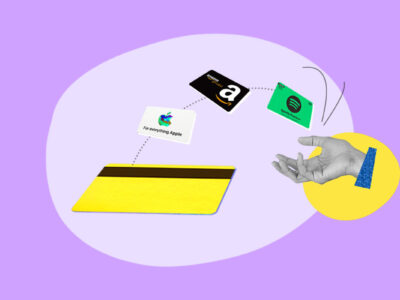What Is the Upgrade Card?
The Upgrade Card can be used much like a normal credit card. However, it doesn’t give you revolving credit like you get with a normal card; instead, it gives you installment credit.
As such, the Upgrade Card functions more like a personal loan than a credit card. It converts all of your debts into installment loans, which you then repay in fixed installments, over a fixed timeline, and at fixed interest rates.
How Does the Upgrade Card Work?
When you sign up for the Upgrade Card, you’ll get a credit line (from $500 to $50,000) that you can use in one of two ways:
- Like a loan: You can move funds (up to your credit limit) directly from your card to your bank account. You can do this multiple times with no need to reapply like you’d have to with a normal installment loan.
- Like a credit card: You can make purchases on your Upgrade Card as you would with a normal credit card. However, you don’t repay your debts in the same way.
Each time you use either of these services, it’s called making a “draw.” For both types of draw, you’ll pay back the amount you borrow in equal monthly installments over a set period of 24–60 months. 1
Your interest rate and repayment schedule for each draw (as well as the credit line Upgrade offers you) will depend on:
- Your credit score
- Your credit usage history
- The amount you request
- Other factors
As you repay the money you’ve borrowed from each draw, you may get more credit (up to the maximum line amount that Upgrade approves you for). But this is at the discretion of the card issuer.
Upgrade Card Review
The Upgrade Card’s unique qualities make it more suitable for specific types of borrowers and situations. Here’s what you should know about the Upgrade Card to help you decide whether it’s right for your needs:
- Payments are predictable: With each draw you make, you’ll find out the exact timelines, interest rates, and installment amounts for your repayments upfront.
- There are no fees: This card has no account-opening fees, annual or monthly fees, late payment fees, or other fees. So if you need a card to consolidate debts at low cost—and you’re not eligible for cards with 0% APR offers—Upgrade could be a good choice.
- Interest is unavoidable: With most credit cards, you can skip interest charges if you pay off your entire balance in full each month. But you can’t do this with the Upgrade Card.
- Interest may be fairly cheap: The Upgrade Card’s APRs are in the range 14.99% – 29.99% (variable), so although it has some high rates, its lowest rates are below average. If you have one or more purchases that you need more than a month to pay for, this card may save you money on interest.
- You can get high credit limits: The Upgrade website says the Upgrade Card’s credit lines usually go up to $25,000, which is very generous.
- It can help you build credit: This card reports to all three major credit bureaus, so it’ll help all of your most important credit scores. However, it’ll affect your credit differently from how a normal credit card would (which we’ll elaborate on later).
Pros & Cons
Pros
- No security deposit required
- Low APRs available
- No fees
- Credit reporting to all three major credit bureaus
Cons
- No rewards
- No way to avoid paying interest
- Less flexible than a traditional credit card
- Potentially larger minimum payments than with a traditional credit card
Who Is the Upgrade Card Best For?
- Anyone who struggles to pay back credit card debts: With normal credit cards, minimum required payments and interest charges can be unpredictable and tricky to budget for. The Upgrade repayment structure makes it easier to plan your payments and control your finances; plus, the set payoff date can help you pay off debts faster than you might with a traditional credit card.
- Borrowers who can’t offer collateral: Borrowers often use property as collateral to get loans for expenses like home improvements, study costs, emergency expenses, or even debt consolidation. If you don’t have anything you can use as collateral, the Upgrade Card is a good alternative to these types of credit lines.
- Anyone who has a project with ongoing expenses: If you have a project that you want to pay for as you go along and that requires flexible funding (e.g, home renovations or academic studies that require expensive materials), you might not want to take out a huge loan all at once and immediately start paying interest on it. The Upgrade Card lets you spend, pay off your balance, then spend again as required—like you would with revolving credit, but with less expense and unpredictability.
Alternative Cards
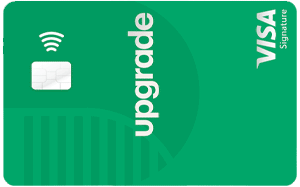 | 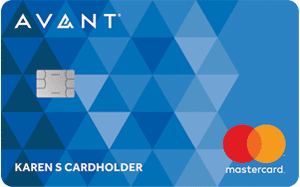 | 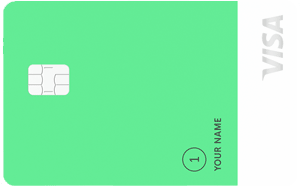 |
Upgrade Card | Avant Credit Card | Petal 1 Visa® |
| Apply Now | Apply Now | Apply Now |
| Annual Fee $0 | Annual Fee $0–$59 | Annual Fee $0 |
| Credit Limit $500 – $50,000 | Credit Limit $300 – $2,000 | Credit Limit $300 – $5,000 |
| Credit Score 580 – 739 | Credit Score 300 – 669 | Credit Score 300 – 669 |
| Purchase APR 14.99% – 29.99% (variable) | Purchase APR 27.24% – 29.99% (variable) | Purchase APR 22.99% – 32.49% (variable) |
What the Crowd Says
There are hardly any online sources for reviews of the Upgrade Card. However, there are many reviews of other Upgrade credit card and loan offerings. In general, Upgrade cards seem to have made a positive impression among financial experts and reviewers, who like the loan–credit card hybrid model.
The original Upgrade Card—which is the most basic credit card that Upgrade offers—may be getting limited attention because it’s somewhat niche or because other Upgrade products are more interesting to experts. Most of the reviews you can find specifically on the Upgrade Card are from Credit Karma users, where the card gets a 4.3 rating.
What Major Publications Say
As of January 5, 2023, there are no accurate reviews by major publications focusing specifically on the Upgrade Card.
There are several reviews of the Upgrade Cash Rewards Visa®, and some reviews that appear to conflate different Upgrade cards (as there are several that look the same). So you should proceed with caution when you are checking reviews for this card; they may be misleading.
What Cardholders Say
Most customer review websites cover a variety of products from Upgrade rather than singling out the Upgrade Card. Some sites cover Upgrade’s other cards and loans, or comment more broadly on Upgrade as a lender.
On some of these sites, people say that they didn’t understand how Upgrade cards work when they applied for one. A number of customers felt that they’d been misled into thinking that they were getting a credit card when in fact they were getting something more like a loan.
Compliments
- Easy application
- High initial credit limit
Complaints
- Poor customer service
- Privacy concerns
- Customers feel they didn’t get enough information before they signed up for the card
- Paying off the entire card balance took multiple attempts
- Payments on their card accounts took a long time to process
- Difficulties making one-off (non-autopay) payments towards Upgrade Card balances
Upgrade cards get quite a bit of positive feedback from cardholders, many of whom seem pleased at how quickly and easily they were able to get the card. However, there are still a couple of major complaints that prospective cardholders should bear in mind:
- Customers couldn’t pay off their balance: Many customers give Upgrade a low rating because they had problems paying off their balance in full. They claim that, whenever they thought they’d settled their balance, they found that they still owed more interest (perhaps due to the time required to process payments), and that this issue recurred whenever they tried to pay off what they owed.
- Customer service: Cardholders complain of various problems with Upgrade’s customer service, including technical issues, difficulties getting through on the customer service phone line, and unhelpful customer service representatives.
- Privacy concerns: An unusually large number of customer reviews comment on the amount of personal information Upgrade applicants have to provide and express concerns about privacy.
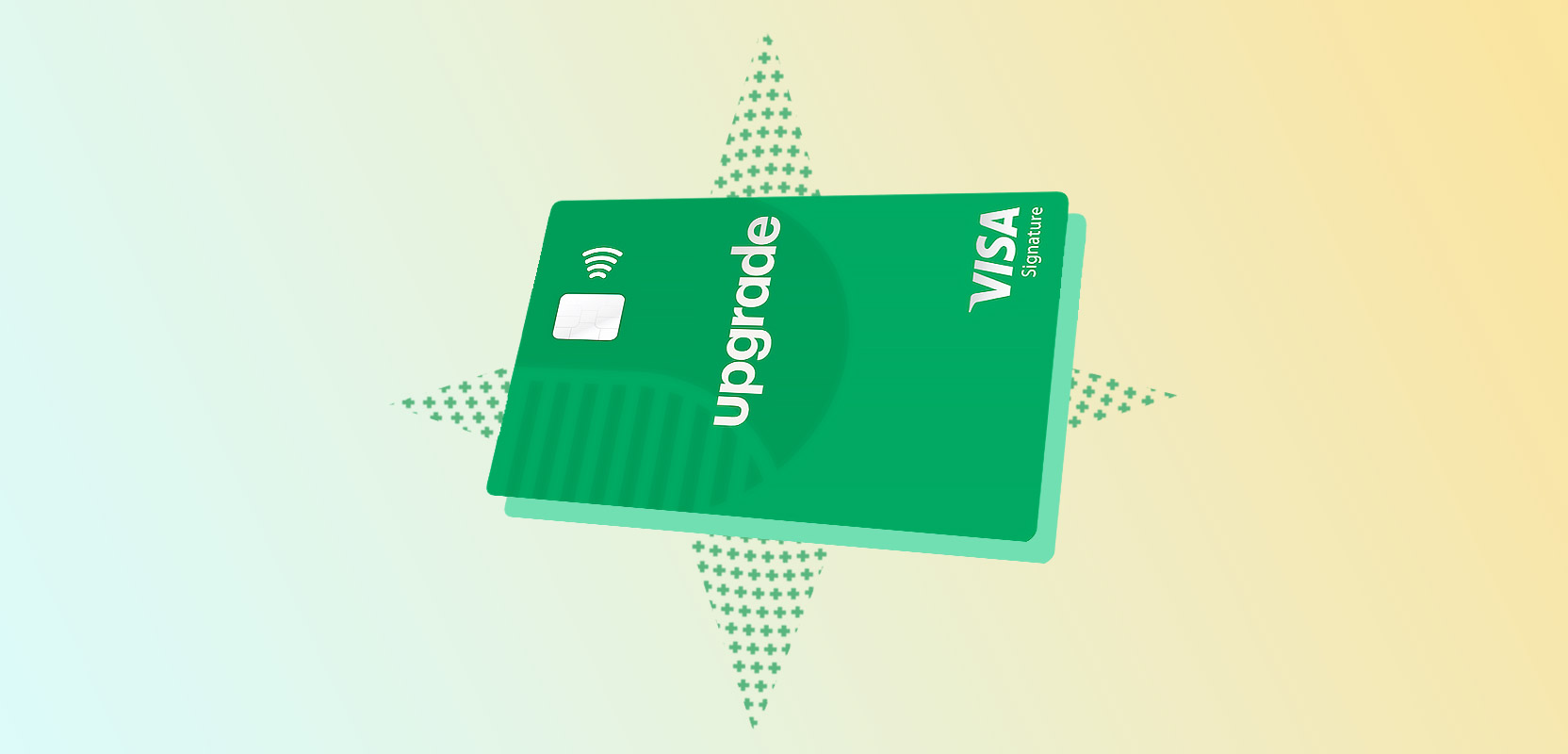
Rates & Fees
Fees
Fees:
The Upgrade Card has none of the fees that you often get with credit cards—not even late fees. Upgrade doesn’t specify what will happen if you make a late payment. However, it’s likely that they’ll report your late payments to the credit bureaus, and they might also stop you from making any more purchases by freezing your card.
- Annual fee: $0
- Monthly fee: $0
- Foreign transaction fee: $0
- Late payment fee: $0
Interest Rates
APR:
The Upgrade Card’s APRs are in the range of 14.99% – 29.99% (variable), so you could get a low offer. However, this depends on various factors (including your creditworthiness). Although you can sometimes get low interest rates on a traditional credit card, it’s less likely with cards for credit building, so for bad-credit borrowers, the Upgrade Card will often be cheaper.
- Purchase APR: 14.99% – 29.99% (variable)
The annual rate of interest you pay for a credit card is called the APR (annual percentage rate).
With Upgrade, your APR depends on:
- Your credit score
- Your credit usage history
- The amount you request
- Other factors
The Upgrade APR, unlike many credit card APRs, isn’t variable. Once you make a “draw” (i.e., a purchase or a transfer to your bank account), the interest rate that applies to that particular draw can’t usually change, although the interest rate may differ for your next draw.
The Upgrade Card also differs from most normal credit cards in that you’ll always start accumulating interest as soon as you use your card to make a purchase or transfer money to your bank account. Most other cards give you a credit card grace period that allows you to avoid interest charges, but Upgrade doesn’t.
Rewards
Rewards:
The Upgrade Card won’t get you any cash back, points, or air miles. But as you won’t be paying fees just to own the card, it’s not too much of a worry that you won’t also be earning anything from it. Nonetheless, if earning rewards is important to you, you should consider alternatives.
Many credit cards for bad or limited credit come without rewards programs, but you can still find rewards cards for all types of credit scores if you look hard enough. For example, the Petal cards and the Discover it® Secured credit card are designed for holders of bad, limited, or no credit and offer rewards.
Credit Limit
Credit Limit:
The Upgrade Card offers initial credit lines ranging from $500 to $50,000. But according to the Upgrade website, the maximum Upgrade Card limit is typically $20,000. 2 This is very high for a card that’s geared toward credit building.
Benefits
Most of the Upgrade Card benefits are the standard ones that come with all Visa credit cards.
| Benefit | What It Means |
|---|---|
| Credit Health | Get your VantageScore 3.0 credit score from TransUnion plus other credit-related tools and information (e.g., a credit score simulator to predict how certain scenarios or actions could affect your credit). |
| Roadside dispatch | Enjoy access to a pay-per-use emergency roadside assistance program in case your car breaks down (e.g., if you need towing or fuel delivery). |
| ID theft & fraud protection | Get free monitoring to check for unusual activity on your Upgrade Card or potentially criminal use of your personal information on the dark web. |
| Zero fraud liability | Get reimbursed for any losses if someone uses your Upgrade Card without your authorization. |
| Help with lost or stolen cards | Get a new Upgrade Card within 1–3 days. Plus, Visa can arrange a wire cash transfer to your local Western Union if you need emergency funds. |
| Visa Offers + Perks | Access discounts and savings on food and wine, shopping, sports, entertainment, and other eligible purchases. |
How to Get an Upgrade Card
Credit Score Required
The Upgrade website doesn’t specify any credit score requirements for the Upgrade Card. When we contacted Upgrade, they told us that this card is meant for people who are “building or looking to improve their credit,” which means you can probably qualify even if you don’t have a very good credit score.
How to Apply
The Upgrade site says that it takes only a few minutes to apply for an Upgrade Card online. When you do, you’ll have to provide some basic information about yourself, and Upgrade will ask for permission to check at least one of your credit reports (which could be any of your Experian, Equifax, or TransUnion reports).
They’ll then show you any credit line offers you may qualify for.
Building Credit
Credit Reporting
Credit Reporting:
The Upgrade customer service team told us that Upgrade reports to all three of the major credit bureaus. However, your Upgrade Card will affect your credit differently from how a normal credit card would, since the Upgrade Card functions as installment credit rather than revolving credit (and these two types of credit affect your credit score differently).
Note that, if you’ve used your Upgrade Card more than once, it will generate multiple installment loans. But these loans will show up on your report as one combined account (with your monthly payments lumped together into a single amount due and maximum repayment period).
Tips for Credit Building
A good credit score opens doors for even better credit cards and loans in the future. However, you must use your Upgrade Card responsibly to build credit. These tips will help you improve your credit score:
- Use your card: If you don’t use your Upgrade Card, the issuer may not report any activity to the credit bureaus, so your credit probably won’t benefit. As Upgrade gives you installment credit rather than revolving credit, it can’t report your credit utilization rate (which represents how much of your available revolving credit you’re using)—only the amount you’ve borrowed when making a draw and information about your repayments.
- Pay your bills promptly: With the Upgrade Card, as with other types of loans, you’ll have to pay your bills in a timely manner to build credit. On the other hand, if you get late payments, it can damage your credit scores.
- Use services like Upgrade’s “Credit Health”: Upgrade gives you access to this online service, which has credit-building information and tools, including your TransUnion VantageScore 3.0 credit score. VantageScore credit scores aren’t as widely used as FICO credit scores, but you should still track them if possible to find out whether your credit is improving, or whether it needs work in particular areas.
FAQs
Who issues the Upgrade Card?
Sutton Bank issues the Upgrade Card.
Is the Upgrade accepted everywhere?
Yes, the Upgrade card is a Visa card, so it will work anywhere that takes Visa, which means almost everywhere that accepts credit cards.
Can I get cash from the Upgrade Card?
You can’t use the Upgrade Card to get cash directly (i.e., to take out a credit card cash advance). However, you can use credit from your Upgrade Card to transfer funds into your bank account. You can then withdraw the money from your bank account as cash.
Does the Upgrade Card allow balance transfers?
No, the Upgrade Card doesn’t directly allow credit card balance transfers, which is when you move debt from one credit card to another. But you can use your Upgrade Card indirectly to pay off your balance—a bit like a debt consolidation loan.
To do this, simply transfer money from your Upgrade Card into your bank account, and once you have the funds, use the loan money to pay off the outstanding credit card balance.
What is the Upgrade Card customer service number?
For help with applications, the Upgrade Card customer service phone number is (855) 466-5995.
Alternatively, you can email Upgrade at [email protected].
How do I pay my Upgrade Card credit card bill?
You can pay your Upgrade Card account on the Upgrade dashboard. You can also download Apple and Android apps for making payments.
To make payments by phone, contact Upgrade’s Account Servicing team at (844) 899-9931.
To pay by check, make the check out to Upgrade, Inc. (and include your Loan ID Number), then mail the check to:
Upgrade, Inc.
Lbx#452210
P.O. Box 52210
Phoenix, AZ 85072-2210
Does the Upgrade Card do a hard pull?
Yes, the Upgrade Card issuer will probably do a hard pull on your credit report. A hard pull is a type of credit check—also known as a hard inquiry—that other lenders see when they view your credit report (and it usually knocks a few points off your credit score).
When you apply for the Upgrade Card, Upgrade will ask for permission to view one or more of your credit reports, so they’ll likely do a hard inquiry at some point during the approval process.
Does the Upgrade Card increase your credit score?
Yes, the Upgrade Card reports to all three of the major credit bureaus, so it can potentially increase your credit scores with all of these bureaus.
But as mentioned, it will affect your credit score a bit differently from how a normal credit card would. For example, it won’t affect your credit utilization rate, as this is based on the amount of revolving credit you’re using (whereas Upgrade gives you installment credit).
How We Rate Our Cards
Every card we review is rated on a 5-star rubric that's unique to the card's intended audience. A card's final rating will be based on factors like its:
- Fees
- Interest Rates
- Rewards
- Credit Limit
- Accessibility
- Benefits
Our rubrics are completely transparent and open to alterations as advised by you, our readers. Join us on Discord if you have thoughts to share about how we rate and review credit cards.
